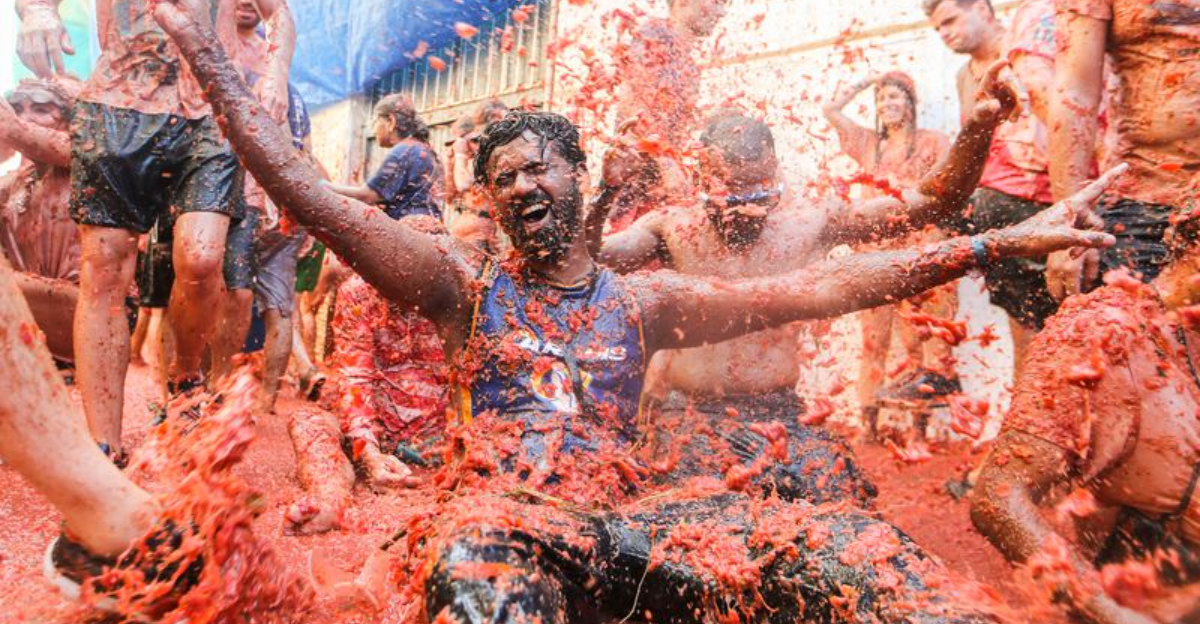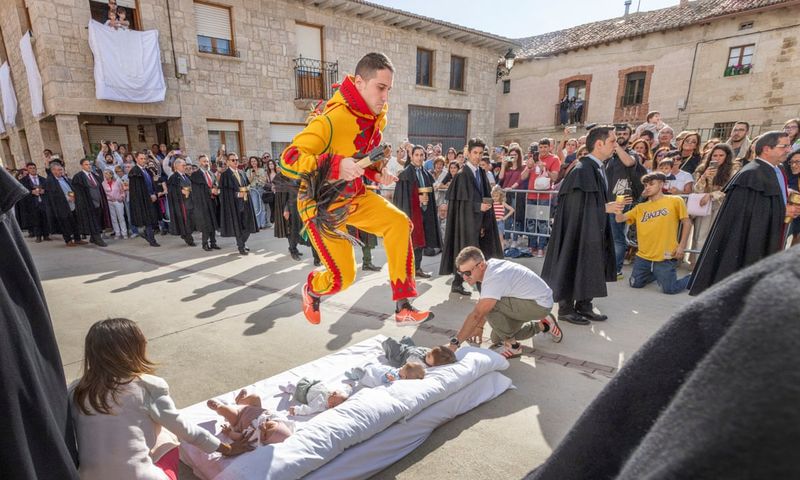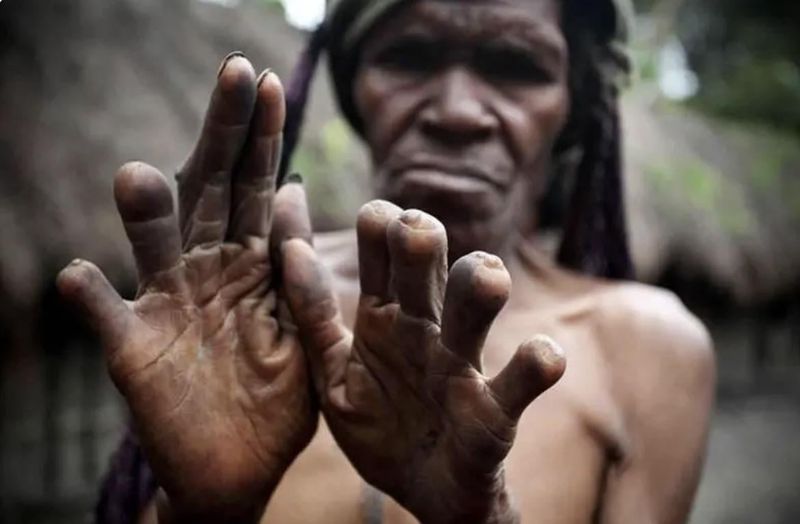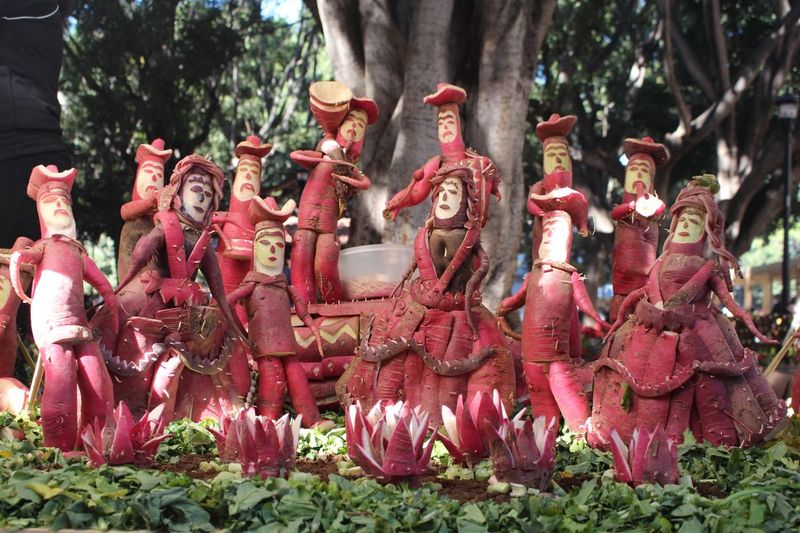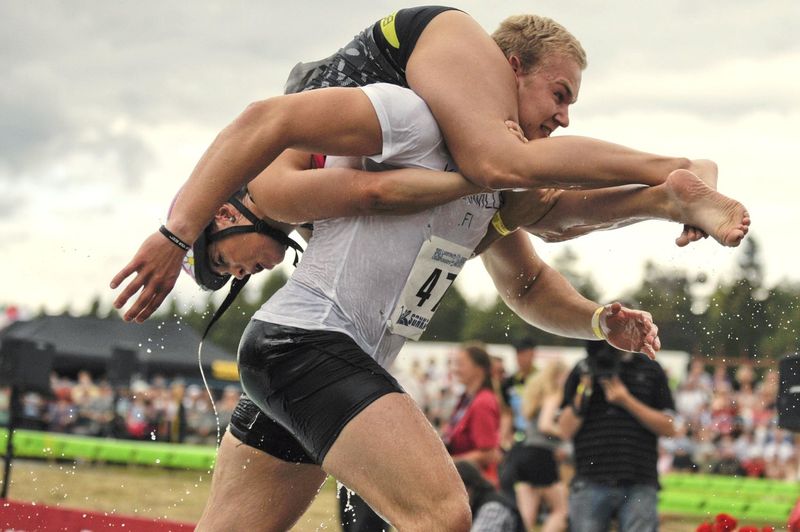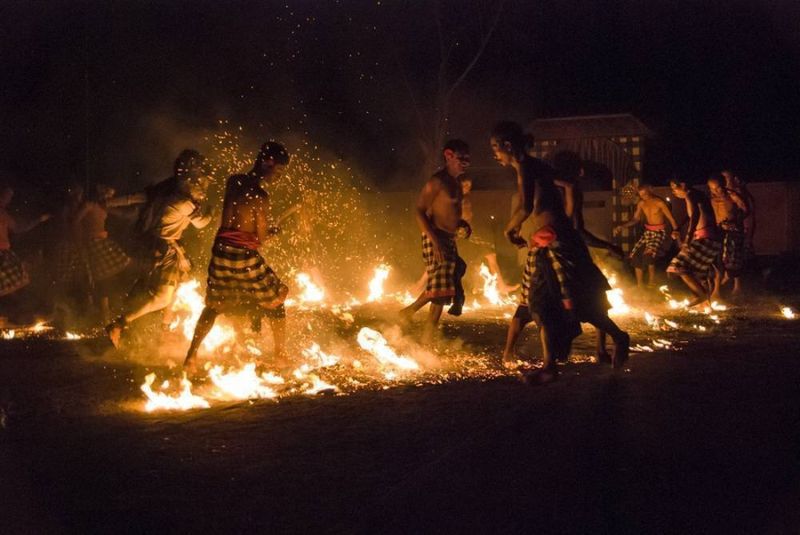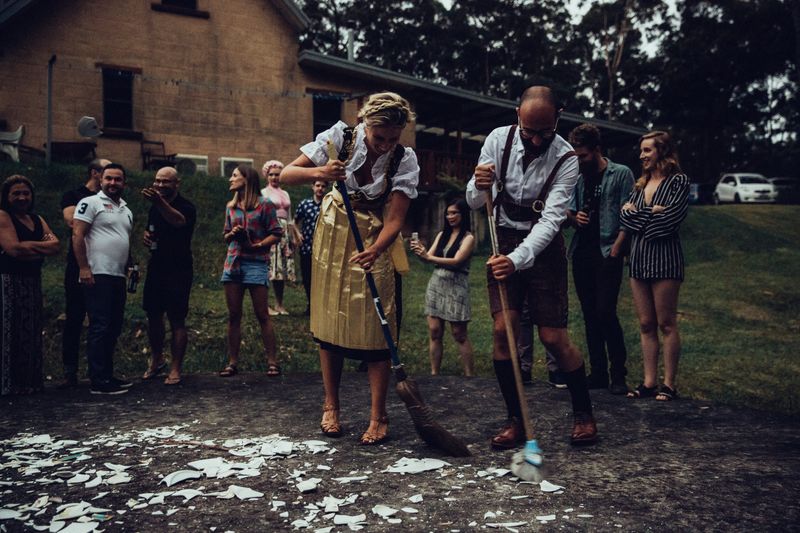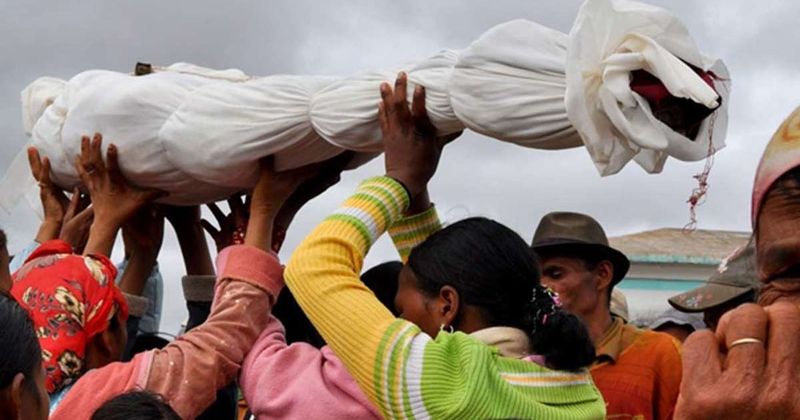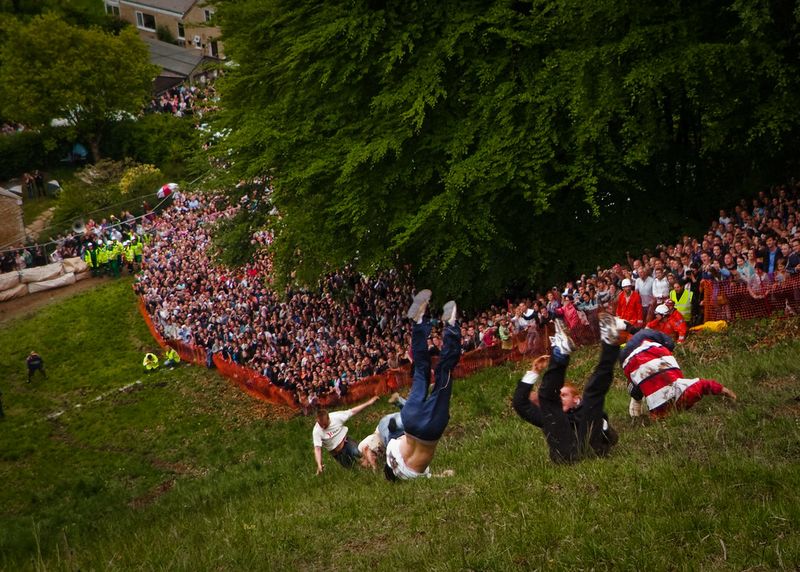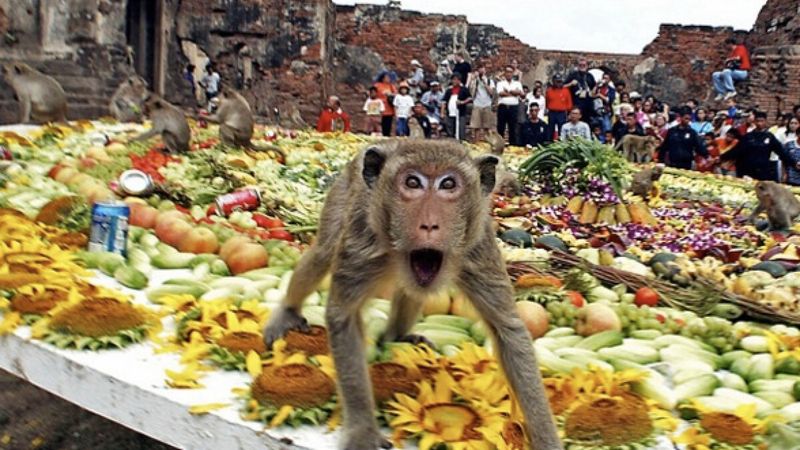Cultural traditions offer a glimpse into the values and beliefs that shape societies. These unique customs reveal the diversity and richness of human culture, reflecting the creativity and resilience of communities across the globe. From joyous celebrations to solemn rites, these traditions have withstood the test of time, continuing to thrive in modern times.
1. Baby Jumping (El Colacho, Spain)
In the quaint village of Castrillo de Murcia, an unusual ritual takes place. Dressed as the devil, men called El Colacho leap over rows of babies born in the past year. This centuries-old tradition, dating back to the 1620s, is believed to cleanse the infants of original sin.
The ceremony is part of the Catholic feast of Corpus Christi, blending fear and faith into a spectacle of daring jumps. While modern eyes may see danger, the locals trust in the ritual’s protective power, rooted deeply in their cultural beliefs.
2. Finger Cutting of the Dani Tribe (Indonesia/Papua New Guinea)
In the remote highlands of Papua, the Dani tribe follows a practice as harrowing as it is heartfelt. When a loved one dies, women of the tribe sever a finger joint in mourning. Known as Ikipalin, this tradition symbolizes the pain and loss felt by the family.
Though the practice is declining due to external influences, some elders still adhere to it, honoring their ancestors’ ways. It’s a poignant reminder of the lengths humans will go to express grief, deeply entwined with the community’s identity and heritage.
3. Thaipusam Piercings (Hindu Festival, Malaysia & Singapore)
Thaipusam is a Hindu festival dedicated to Lord Murugan, celebrated with fervor in Malaysia and Singapore. The festival is renowned for its intense rituals, where devotees pierce their bodies with hooks, skewers, and spears as acts of devotion.
In a trance-like state, they carry kavadis—ornate structures symbolizing burdens—along a pilgrimage route. The piercings are not seen as pain but as a testament to faith and endurance. This vibrant display of spirituality attracts thousands, blending sacred rituals with colorful celebrations, embodying the resilience of belief.
4. Hanging Coffins (Sagada, Philippines & China)
High above the ground, suspended on cliffs, lie the coffins of the Igorot people in Sagada. This ancient practice of hanging coffins is believed to bring the deceased closer to ancestral spirits, protecting bodies from wild animals.
The tradition is shared with some communities in China, reflecting a rich spiritual heritage. It’s a testament to unique burial customs that prioritize proximity to the heavens, blending reverence for the afterlife with a profound respect for nature. This awe-inspiring sight continues to attract visitors keen to witness this extraordinary cultural practice.
5. The Night of the Radishes (Oaxaca, Mexico – Noche de Rábanos)
Every December 23rd, the streets of Oaxaca come alive with an unusual artistic competition. Known as the Night of the Radishes, artisans carve giant radishes into intricate scenes, blending folk art with agriculture.
Originating in 1897, this quirky tradition captures the imagination with its creativity and craftsmanship. The radishes, grown specifically for this event, serve as a canvas for cultural expression. It’s a night where creativity flourishes, and the community comes together to celebrate the joy of artistic endeavor, making it a cherished annual event.
6. Wife-Carrying Championship (Finland & Worldwide)
What began as a humorous nod to a 19th-century legend has evolved into a global phenomenon. The Wife-Carrying Championship, held annually in Finland, challenges men to carry a female teammate through a demanding obstacle course.
The winner receives the wife’s weight in beer, adding a playful twist to the competition. It’s not just about strength and endurance; it’s a celebration of teamwork and camaraderie. This quirky sport has captured the imagination of participants worldwide, adding a touch of humor and fun to athletic contests.
7. La Tomatina (Buñol, Spain)
Imagine a day where the streets turn red, not from anger but from the squashing of thousands of overripe tomatoes. La Tomatina is a festival filled with joy and chaos. Each year, on the last Wednesday of August, the small town of Buñol in Spain transforms into a battleground of tomato-tossing revelers.
The tradition began in the 1940s during a local parade when an accidental food fight sparked a yearly event. It’s not just about messy fun; it’s a celebration of community spirit, where locals and tourists alike come together to enjoy this unique festivity.
8. Firewalking (Across Cultures – Fiji, Greece, India, Spain)
Across various cultures, the act of firewalking is a mesmerizing testament to faith and resilience. From Fiji to Greece, India to Spain, devotees walk barefoot over hot coals as a rite of passage or spiritual test.
The Anastenaria in Greece is particularly famous, blending Christian and pagan rituals into a captivating spectacle. Participants enter a trance-like state, guided by music and prayer, proving their endurance and devotion. This timeless ritual continues to inspire awe, connecting participants with their spiritual roots in a fiery dance of faith.
9. Polterabend (Germany & Austria)
In the lead-up to a wedding, German and Austrian couples partake in a unique pre-nuptial tradition known as Polterabend. Friends and family gather to smash porcelain dishes outside the couple’s home.
As the shards pile up, the couple works together to clean up, symbolizing the teamwork needed in marriage. It’s a joyful occasion filled with laughter and camaraderie, where the noise of breaking dishes is believed to ward off evil spirits. This lively event strengthens bonds and starts the marital journey on a foundation of unity.
10. The Blackening (Scotland)
Before tying the knot, Scottish couples face a messy tradition known as The Blackening. Friends and family cover the bride and groom with mud, feathers, and spoiled food, parading them through the town.
This pre-wedding ritual is both playful and symbolic, preparing the couple for the challenges ahead. It’s an act of love and camaraderie, where laughter and embarrassment forge strong bonds. The Blackening is a testament to the community’s role in marriage, ensuring the couple faces life’s hurdles with humor and resilience.
11. Famadihana (Madagascar – “Turning of the Bones”)
In Madagascar, the turning of the bones, or Famadihana, is a vibrant celebration of ancestral connection. Every few years, families exhume their ancestors’ remains, rewrapping them in fresh cloth.
The event is marked by music, dance, and feasting, honoring the deceased with joy rather than sorrow. It’s a profound expression of love and respect, where life and death coexist in harmony. Famadihana reflects the Malagasy belief in the ongoing presence of ancestors, creating a living bond between generations.
12. Kanamara Matsuri (Japan – “Festival of the Steel Phallus”)
In Kawasaki, Japan, the Kanamara Matsuri unfolds with humor and reverence. This Shinto fertility festival is characterized by giant penis-shaped shrines paraded through the streets.
Visitors participate in this lively celebration, purchasing phallic-themed souvenirs and offering prayers for fertility and protection from STDs. The festival is a unique blend of sacred and profane, attracting locals and tourists alike. It’s a testament to Japan’s ability to embrace tradition with a modern twist, creating a space where laughter and faith coexist.
13. Whistled Language (Turkey & Canary Islands, Spain)
In the remote village of Kuşköy, Turkey, and La Gomera in Spain, communication transcends words through whistled languages. These intricate systems allow messages to be conveyed across vast distances.
Whistling carries over the rugged terrain, connecting communities in a melodious exchange. This practice, rooted in necessity, highlights human ingenuity in overcoming environmental challenges. Though modern technology threatens its existence, efforts to preserve this cultural heritage continue, celebrating a unique linguistic tradition that sings across the landscape.
14. Cooper’s Hill Cheese Rolling (Gloucestershire, England)
Each spring, brave souls gather in Gloucestershire, England, for a truly peculiar event: the Cooper’s Hill Cheese Rolling. Participants chase a wheel of cheese down a steep hill, risking life and limb for glory.
This adrenaline-fueled tradition draws spectators and thrill-seekers alike, its origins shrouded in mystery. The chaotic race reflects a rebellious spirit, where triumph comes from sheer audacity. It’s a spectacle where tradition meets thrill, creating a sense of community through shared adventure and the occasional tumble.
15. The Monkey Buffet Festival (Lopburi, Thailand)
In Lopburi, Thailand, monkeys reign supreme during the annual Monkey Buffet Festival. Locals lay out a massive spread of fruits, vegetables, and treats for these revered creatures.
This unique event is rooted in a legend where a monkey army aided a king, and today, it serves as an act of gratitude and a tourist attraction. The festival highlights the harmonious coexistence of humans and monkeys, drawing visitors eager to witness this extraordinary feast. It’s a celebration of community and nature, where legends live on.
